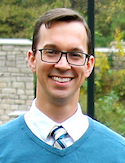Ian Schneider, PhD

email: ians@iastate.edu
phone: 515-294-0450
Title(s)
Associate Professor, Chemical and Biological Engineering
Iowa State University
Office
2035 Sweeney Hall 618 Bissell Road Ames, IA 50011-1098
Information
Education
Ph.D. Chemical Engineering, North Carolina State University, 2005
M.S. Chemical Engineering, North Carolina State University, 2002
B.S. Chemical Engineering, Iowa State University, 2000
Research Interests:
Adhesion and cytoskeleton dynamics:
Cell migration occurs in steps of protrusion, adhesion, contraction, traction generation and retraction. First the cell protrudes via force generated by polymerization of the actin cytoskeleton. The protrusion adheres to the surroundings through specific interactions between integrins and the ECM. This interaction generates macromolecular protein complexes called focal adhesions (FAs). Once adhered, the cell generates contractile forces through the actin cytoskeleton. These contractile forces allow the cell to detach at its trailing edge and move forward. It has long been known that collagen and EGF alter cell migration speed, persistence and directionality when either presented uniformly, in gradients or on aligned fibers. Recently, has there been an interest in pursuing quantitative, high resolution techniques to measure morphology and focal adhesion dynamics . While these papers have at times examined the effect of ECM or growth factors on changes in morphology or FA dynamics, none have attempted to examine their regulation during contact guidance, chemotaxis or when both cues are present.
Cancer cell-immune cell paracrine interactions:
Cell-cell communication regulates the physiological process of wound healing as well as the pathological process of cancer metastasis. Recently, it was discovered that there is a paracrine loop linking carcinoma cells and macrophages during the early stages of metastasis. Carcinoma cells secrete colony stimulating factor-1 (CSF-1). CSF-1 induces macrophages to secrete epidermal growth factor (EGF). EGF induces carcinoma cells to leave the tumor and to secrete more CSF-1, which in turn activates more macrophages. We are interested in examining the signaling dynamics of this paracrine interaction as well as how this paracrin interaction operates spatially in mixed-cultures with varying densities and spacing of cells.
Coincidence detectors for cancer diagnostics:
Pancreatic cancer is an aggressive malignancy refractory to surgical excision and available medical treatments resulting in death within 5 years for 94% of diagnosed patients. Two reasons drive the poor prognosis of pancreatic cancer. First, this cancer has not seen decreases in mortality rates like those realized in breast and colon cancer because of a lack of tools to detect pancreatic adenocarcinoma (PDAC) before or during the early stages of invasion. Second, this cancer results in difficult removal of all invasive cancerous tissue during surgery, allowing for redevelopment of the tumor. These challenges require a detection strategy specific to pre-invasive cancerous tissue. Nanoparticles provide an ideal detection platform on which to engineer this required specificity. There has been extensive work done to detect cancer using nanoparticles that merely target cancer cells. These have been largely unsuccessful at generating specific localization because these targeted nanoparticles often bind normal tissue, decreasing the specificity of localization. Coincidence detection, the detection of two inputs simultaneously resulting in one output, provides an opportunity to overcome issues of specificity. I plan to build a coincidence detector by engineering nanoparticles with the ability to target PDAC cells (input 1) and sense enzymatic activity (input 2) that is upregulated directly before invasion. Specifically, I will use quantum dots, which are luminescent nanoparticles that can report enzymatic activity through changes in their optical properties. These nanoparticles will eventually be used during intravital imaging for early PDAC detection or during surgery as pathology tools to help surgeons properly excise all invasive cancer tissue.
Engineering multi-cue migrational environments:
The goal of this research is to use several engineering techniques to create simplified, yet fully tunable in vitro migration platforms. These platforms will be used to assess how cells make migrational decisions when multiple cues are presented. During cancer progression, stromal cells remodel collagen fibers that surround the growing tumor. Cancer cells then migrate out of the tumor along those remodeled fibers, a process called contact guidance. Additionally, immune cells secrete soluble factors, generating concentration gradients. Cancer cells migrate up gradients of soluble proteins such as epidermal growth factor (EGF) towards blood vessels, a process called chemotaxis. Cues for both contact guidance and chemotaxis are presented simultaneously in vivo, however they can be spatially organized such that each gives contradictory information to the cell. While there is a firm understanding of how cells respond to individual contact guiding and chemotactic cues, virtually nothing is known about how cells integrate multiple cues and make migrational decisions based on that integration. I am taking an engineering approach by designing in vitro environments that mimic the in vivo environment with the added ability to independently tune directional cues.



